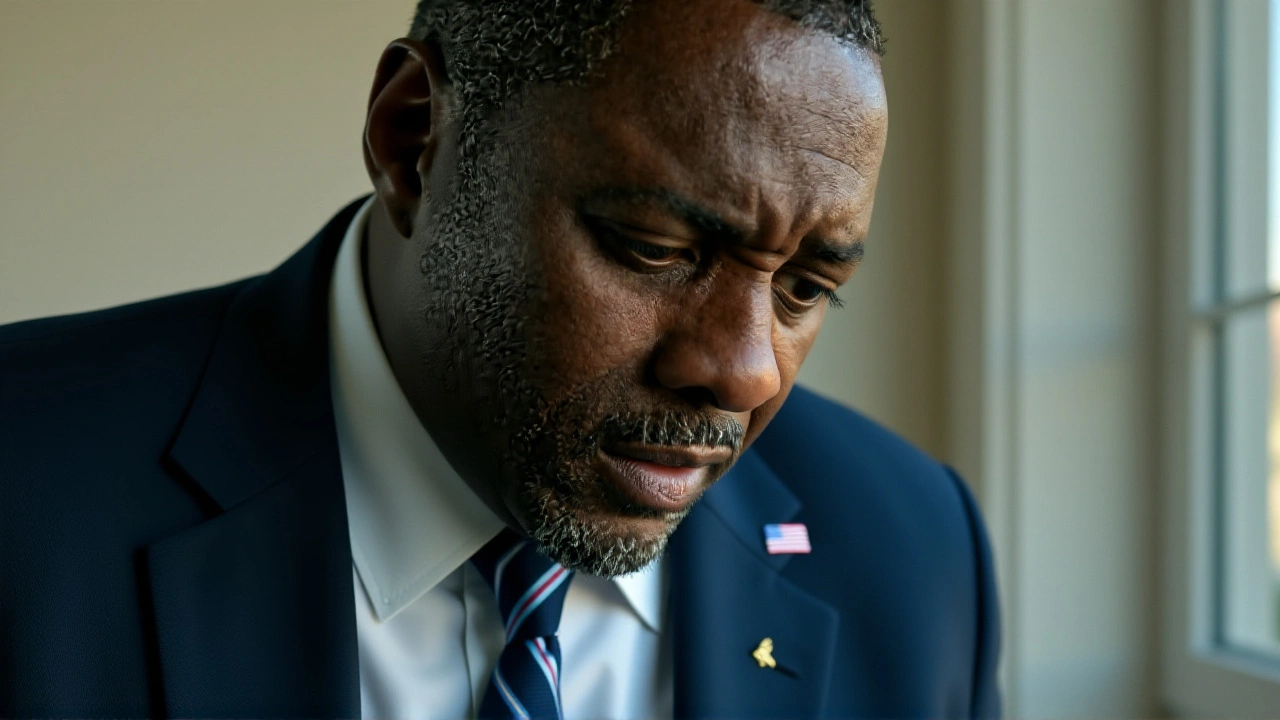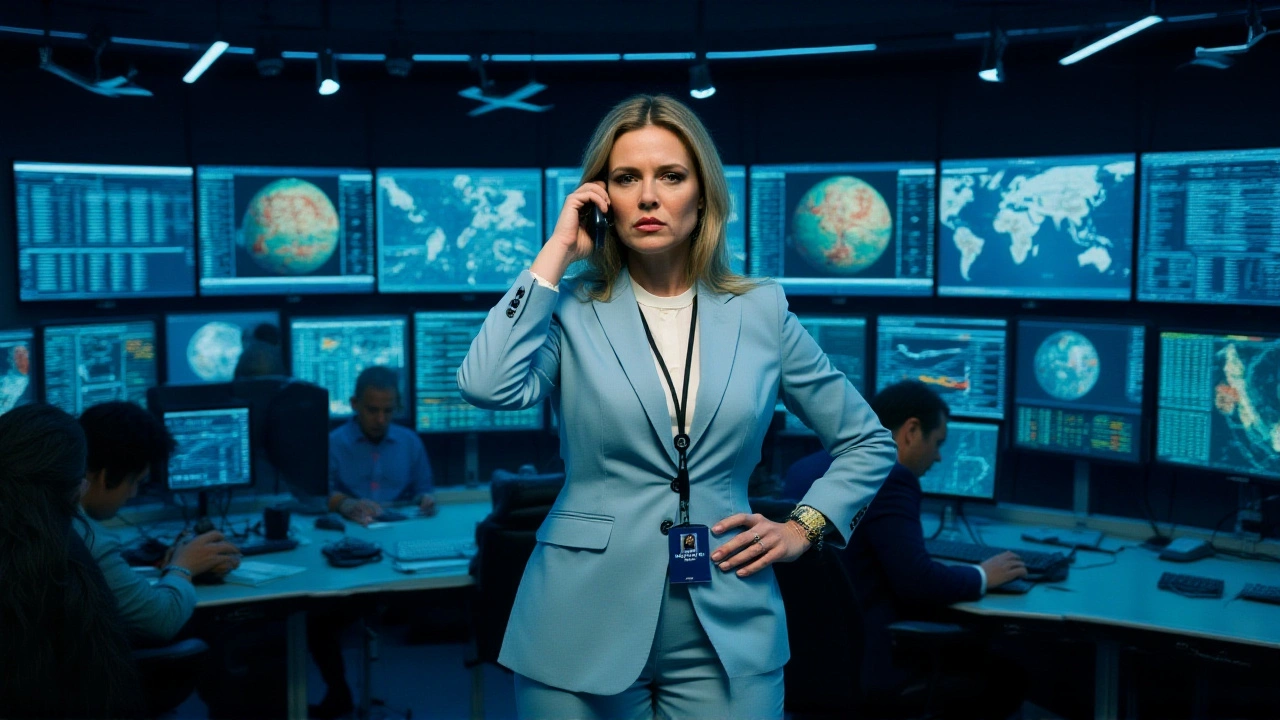26 Oct 2025
- 9 Comments
When Kathryn Bigelow, the Academy‑Award winning director of The Hurt Locker and Zero Dark Thirty, unveiled her latest political thriller A House of Dynamite at the Venice Film FestivalVenice on September 2, 2025, the buzz was immediate. The film stars Idris Elba as a high‑ranking executive racing against the clock, while the streaming giant Netflix handled global distribution. Set against the backdrop of a looming nuclear crisis in Washington D.C., the narrative loops through the same 19 critical minutes from multiple angles, daring viewers to piece together the puzzle before the timer runs out.
Background and Bigelow’s Return to Thrillers
Bigelow hasn’t tackled a pure‑political thriller since Zero Dark Thirty in 2012. Over the past decade she oscillated between war drama and modest indie projects, but the escalating global discourse on nuclear deterrence gave her a timely reason to revisit the genre. In interviews, the director said she wanted to explore how even the most meticulously trained officials can “lose their footing when a warhead is inbound.” This thematic through‑line mirrors her earlier work, where tension springs from procedural rigor colliding with human fragility.
Premiere, Release Strategy, and Early Critical Take
Netflix’s dual‑window approach — a limited theatrical run starting October 10, 2025, followed by a worldwide stream on October 24 — mirrors the company’s recent push to give auteur‑driven films a semblance of “event” status. Critics at the festival were split. Roger Ebert wrote in his festival review that Bigelow’s direction was “pinpoint accurate or merciless,” praising the way the film turns hypothetical scenarios into “narrative actuality.” He highlighted Elba’s performance, noting the line, “This is insanity,” as a chilling reminder of the thin line between policy and panic.

Narrative Structure and Audience Reception
The film’s core gimmick — revisiting the same 19 minutes from the president’s desk, the national security team, and a clandestine bunker — aims to reveal new information each time. Some viewers, like IMDb user vitoriahardrockers, called the opening “the most amazing first 15 minutes I’ve seen in a while,” lauding the tight editing and escalating dread. However, a growing chorus complained that the looping “dilutes the impact” and makes pacing feel circular. One reviewer summed it up: “The narrative loops so much that the tension stalls, and you’re left waiting for a payoff that never arrives.”
Perhaps the most controversial aspect is the abrupt ending. The film cuts off at the moment the characters are about to make a decisive political choice, leaving the audience hanging. IMDb’s rassa‑wayer, who saw the theatrical version on October 19, described the finish as “the worst film I have watched in my life,” while speculating it might be a technical glitch. Yet many argue the open‑ended conclusion is intentional, forcing viewers to contemplate the moral weight of nuclear decision‑making.
Box Office Outlook and Streaming Metrics
Initial box office numbers are modest — the limited release earned roughly $2.3 million in its opening weekend across 12 U.S. theaters. Netflix, however, reported that the film trended in over 30 countries within the first 48 hours of its streaming debut, pulling in an estimated 4.7 million household views in the first week. Analysts at Variety suggest the mixed critical response may curb award‑season momentum, but the film’s controversy could boost its long‑tail viewership, especially among users who crave “talk‑room” cinema.

Implications for Streaming Platforms and Award Seasons
Bigelow’s partnership with Netflix underscores a shift where high‑profile directors are gravitating toward streaming giants for financing and distribution. The model allows for ambitious storytelling — think 110‑minute runtime and a daring narrative experiment — but also places the film directly under the microscope of global audiences, magnifying any structural missteps. As award bodies deliberate, they’ll weigh Bigelow’s pedigree against the film’s polarizing reception. Historically, experimental works have found a place in niche categories, but whether A House of Dynamite secures a nomination for Best Director or Writing remains uncertain.
Frequently Asked Questions
Why does the film repeat the same 19 minutes?
Bigelow uses the loop to show how different agencies perceive the same crisis. Each perspective uncovers new intel, making the audience re‑evaluate what they thought they knew.
Is the abrupt ending a mistake or a creative choice?
The director intended an open‑ended finish to underscore the unresolved nature of nuclear decision‑making, though some viewers suspect a post‑production error in certain screenings.
How did Netflix’s release strategy affect the film’s performance?
The limited theatrical window generated buzz, while the quick streaming debut captured a worldwide audience, yielding strong viewership numbers despite mixed reviews.
What does the film say about current geopolitical tensions?
While it never names a specific nation, the scenario mirrors real‑world anxieties about accidental or intentional nuclear launches, sparking conversations about protocol readiness.
Will the film have any impact on future award nominations?
Bigelow’s reputation secures her name on many ballots, yet the divided critical response could limit its chances outside technical categories like editing or sound design.


Dipen Patel
October 26, 2025Bigelow’s gamble with looping a crisis is bold 😎. The tension builds like a ticking clock, and it’s exciting to see Elba handling that pressure. Hope the streaming push brings more eyes to the conversation! 🚀
Sathish Kumar
November 2, 2025Time repeats, yet each view changes the story. It reminds us that perspective shapes reality, especially in matters of war.
Mansi Mehta
November 9, 2025Oh great, another film that pretends to solve world peace by looping the same 19 minutes. At least it makes us think about how we all love to watch the same drama over and over.
Bharat Singh
November 16, 2025Looped minutes, high stakes 😐
Ravindra Kumar
November 23, 2025The film forces us to confront the abyss of human decision‑making in the nuclear age. It is a stark reminder that power without conscience is a ticking bomb, and the audience cannot remain idle while such horrors are spieled on screen. The moral outrage should ignite dialogue beyond the theatre!
arshdip kaur
November 30, 2025The looping structure of Bigelow’s latest work initially appears as an avant‑garde narrative experiment. However, the repetition quickly devolves into a didactic lecture on geopolitical anxiety. Each revisit of the same nineteen minutes is presented with a different camera angle, yet the underlying information adds negligible novelty. The audience is forced to re‑evaluate the same set of facts while the sense of urgency remains artificially sustained. In a film that claims to explore the fragility of human judgment, the director paradoxically imposes a mechanical rigidity on the storytelling. This contradiction is as conspicuous as a misplaced footnote in a scholarly article. Moreover, the abrupt, unresolved ending feels less like a purposeful artistic choice and more like an unfinished draft left on the editing floor. Viewers familiar with Bigelow’s previous tension‑filled canvases will recognise the meticulous sound design that heightens each breathless moment. Yet the same sound design becomes an echo chamber when the same scene repeats without substantial narrative payoff. The film’s ambition to mirror the chaotic nature of crisis decision‑making is commendable, but the execution borders on self‑indulgence. One could argue that the looping is meant to simulate the frantic analysis of intelligence agencies, but the lack of genuine escalation undermines that premise. The performance by Idris Elba carries the weight of gravitas, offering a steady anchor amidst the temporal turbulence. Nevertheless, even his compelling presence cannot fully compensate for the structural inertia. In the end, the piece serves as a reminder that cinematic innovation must be balanced with coherent storytelling, lest the audience be left staring at a perpetual loop of unresolved dread. Until the director reconciles the desire for experimental form with the need for satisfying narrative resolution, the film will remain a polarising curiosity rather than a definitive masterpiece.
khaja mohideen
December 7, 2025The assertive call for clarity resonates; the film should have offered a decisive moment rather than leaving us dangling.
Diganta Dutta
December 14, 2025Everyone’s calling it a misstep, but the chaos is exactly what makes it thrilling 😜. If you wanted calm, you’d watch a documentary, not Bigelow.
Meenal Bansal
December 21, 2025Your moral alarm is justified, yet the real drama lies in how the public will debate the ethics after binge‑watching the loop.